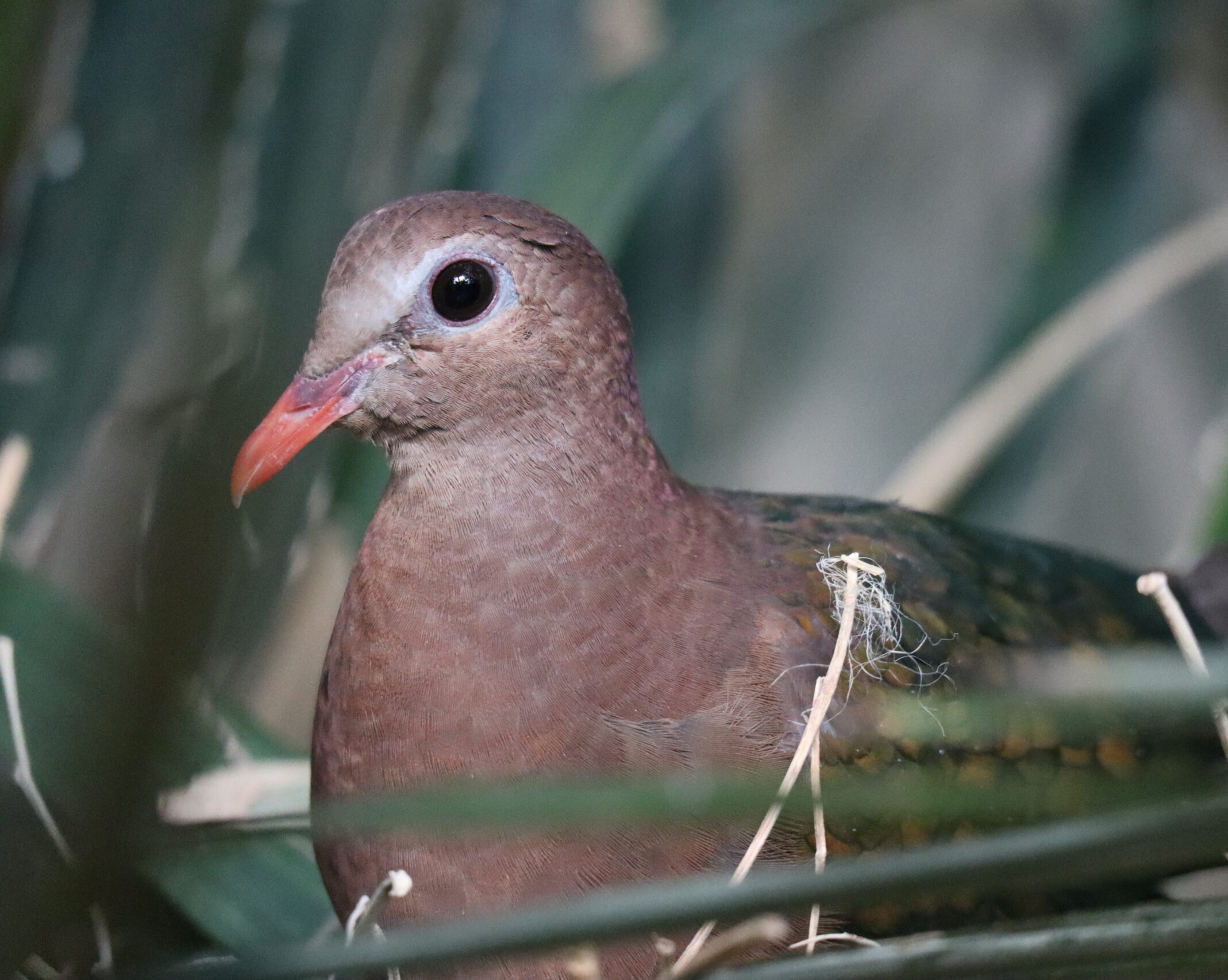I LIVE IN ASIA
The grey-capped emerald dove is most often found in forest habitats throughout Indonesia, Thailand, and India.
I AM AN HERBIVORE
The grey-capped emerald dove’s diet consists of various seeds, fruits, and plants. They will also eat invertebrates when given the chance.
GREY-CAPPED EMERALD DOVES ARE SOCIAL
The grey-capped emerald dove is a somewhat social bird species. They are known to live both singly and in small groups or pairs.
LIFE ON THE GROUND
Grey-capped emerald doves are not known to be frequent fliers. They will spend much of their time on the forest floor searching for fallen fruit, but can fly exceptionally well when needed.
HELPING THE GREY-CAPPED EMERALD DOVE IN THE WILD
The grey-capped emerald doves at the Fort Wayne Children’s Zoo are enrolled in the Species Survival Plan (SSP). SSP is a program implemented by the Association of Zoos and Aquariums (AZA) to help ensure a genetically viable population exists.
I AM IMPORTANT TO MY ECOSYSTEM
Because of their fruit and seed diet, the grey-capped emerald dove plays an important role of seed dispersal in their ecosystem.

